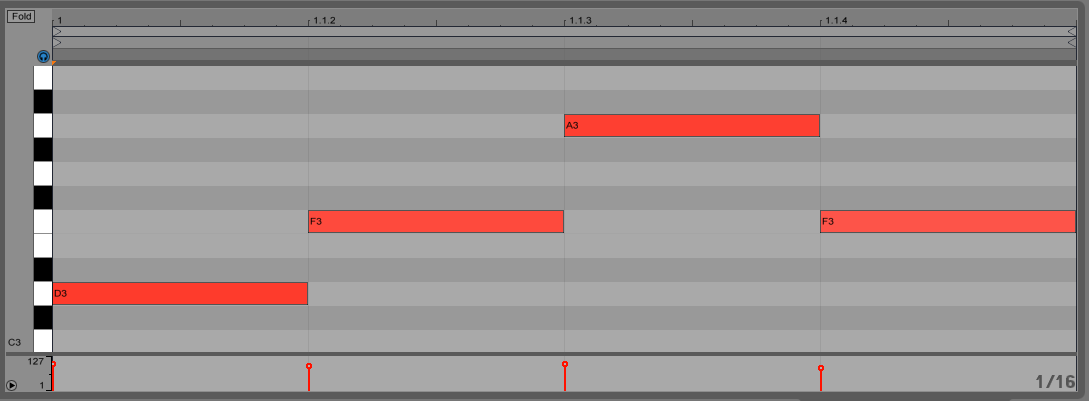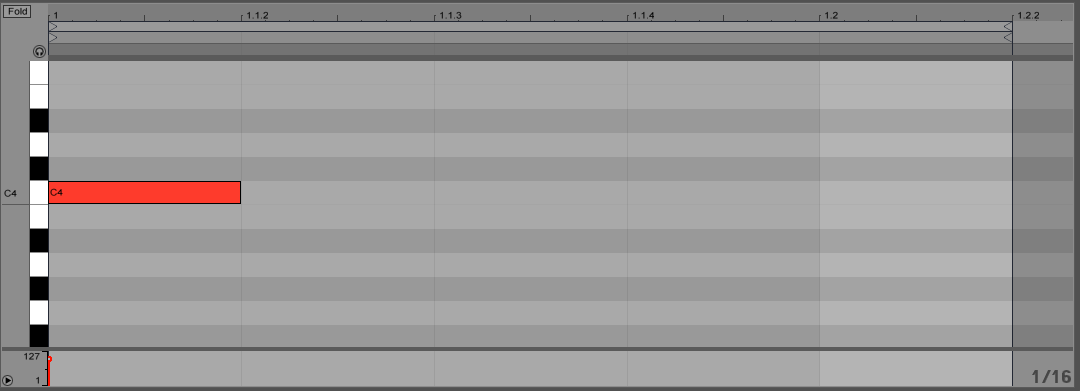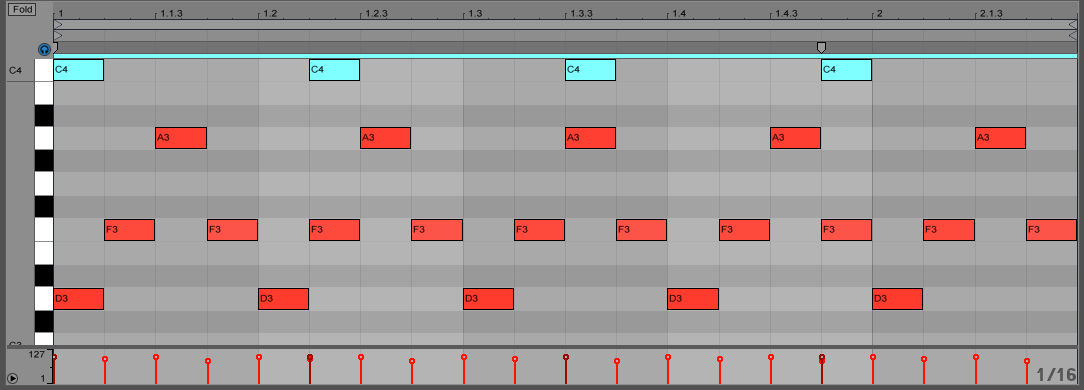Asynchronous or Polyrhythmic Loops
Problem:
Many electronic genres make extensive use of loops. When you listen to your favorite examples of loop-based music, there’s always some sense of motion that keeps the music fresh and interesting, but your own attempts to work this way usually strike you as static and boring.
It seems like a paradox, but “simple”-sounding loop-based genres like minimal techno can be difficult to emulate. All of the elements are on the surface, and it’s easy to hear through the few layers of production. But although the surface level of much of this music suggests that there isn’t much happening, there’s a subtlety and richness of detail at work that separates the good music from the bad.
Our typical mental model of a sequenced MIDI loop in a DAW is something like this: An instrument is played by one looping clip with a fixed length (probably equal to one or more complete bars). At some point, we might stop this clip and then start another clip in its place. So at any moment, any given instrument is either silent or is being triggered by one clip.
Here’s a different way of thinking about looped clips that might make things more interesting.
Solution:
Instead of triggering an instrument with a single clip, try simultaneously triggering it with multiple clips of different lengths. In most DAWs, this will require some kind of inter-track routing. For example, one track could contain the instrument, while one or more additional tracks contain no instruments but instead only the clips that will play the instrument on the first track. These “silent” clips will then have their output routed to the first track.
In this example, imagine an instrument is triggered by a simple looping MIDI pattern consisting of four sixteenth notes:

Simultaneously, the same instrument is being triggered by another loop that contains one sixteenth note followed by four sixteenths of silence. This pattern loops every five sixteenths; it is one sixteenth longer than the first pattern, so they will play out of sync with each other but in time with a shared pulse, a phenomenon known as polyrhythm.

The simultaneous juxtaposition of these two patterns creates an interesting auditory phenomenon. The ear can now hear three simultaneous patterns: the two that are actually being played and the resulting composite, which finally comes back into sync every 20 sixteenth notes:

Here are some variations on these concepts:
- Try adding more loops of differing lengths. For example, adding a third loop to the earlier example that repeats every three sixteenth notes will create a composite that is three times as long; the original patterns will realign after 60 sixteenth notes.
- Rather than letting the composite naturally realign, you could “artificially” realign it anywhere in an arrangement by simply pasting the clips so they begin at that point.
- Some DAWs allow automation to loop at a length that is “unlinked” from the length of the notes in the clip. For example, you could create an envelope that varies a synthesizer’s filter cutoff and have this envelope loop at yet another length from the loops containing notes. Even if your DAW doesn’t have this functionality within clips, you could manually create repeating automation patterns of any length when you build your arrangement.
- Similarly, if you have some kind of modulation source that can control parameters (like an LFO, for example), you could set this to a rate which is again asynchronous in relation to the looping notes.
- If you’re using a plug-in instrument, try using duplicates of the instrument with slightly altered timbres, rather than actually using the exact same instrument. This will weaken the sense of a single composite pattern but may be more interesting anyway. You could even use this technique with hardware synths, provided you have enough of them (or you’re willing to bounce to audio after recording each pattern separately).
- When set against other instruments that are playing in more standard loop lengths, even a single “odd” loop can create the same kind of interesting effects. This approach is common in a lot of early acid tracks; listen to almost anything by Hardfloor for examples.
154 Layering of simultaneous asynchronous loops is a common hallmark of the so-called “Berlin School” of electronic music from the 70s and 80s, which was largely defined by multiple modular sequencers, each playing a monophonic loop consisting of a different number of notes.
A similar technique can be found in ambient pieces such as Brian Eno’s Music for Airports, which is made from multiple tape loops of different lengths. This “analog” approach to the concept is truly asynchronous— if played forever, uneven tape loops are unlikely to ever resynchronize. You could achieve a similar effect in your DAW by offsetting one of your loop lengths so that it’s not quite aligned to the metric grid. Try playing with the amount of offset until you find relationships which sound interesting. This can create some very unusual rhythmic effects.